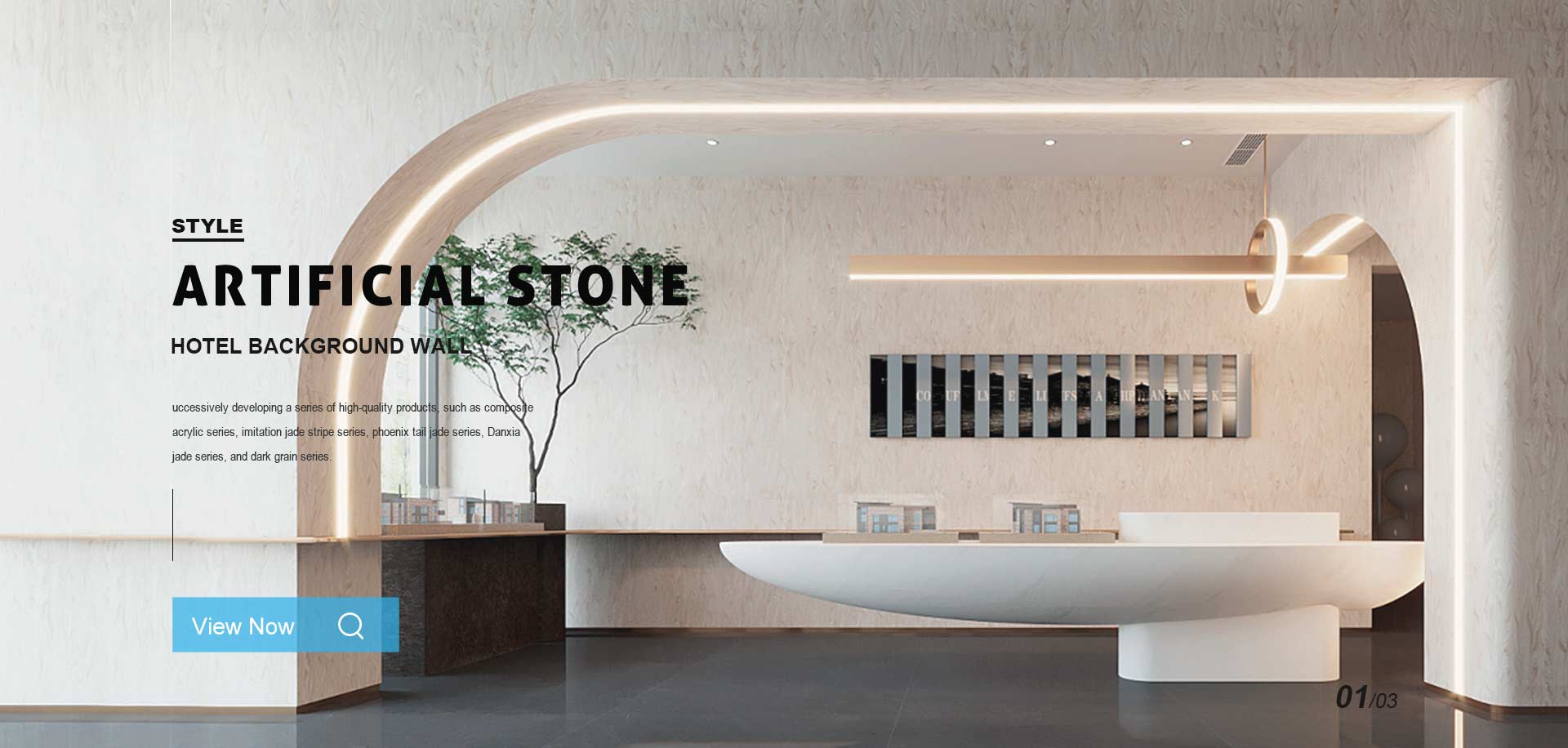
Artificial Marble, also known as engineered or cultured marble, is a man-made material that resembles natural marble in appearance but is composed of a mixture of stone particles, resins, and pigments. Here's an overview of its composition and characteristics:

1. Composition:
Stone Particles:Typically, Artificial Marble is made from crushed marble or other natural stone, although it can also include materials like quartz, granite, or limestone.
Resins:Polyester resins or acrylic resins are commonly used as binding agents to hold the stone particles together and provide structural integrity.
Pigments:Various pigments are added to the mixture to achieve desired colors and patterns.
2. Manufacturing Process:
Mixing:The stone particles, resins, and pigments are thoroughly mixed together to create a homogeneous mixture.
Casting:The mixture is poured into molds of various shapes and sizes, depending on the desired end product.
Curing:The cast material is allowed to cure and harden, usually through a combination of heat and pressure.
Finishing:Once cured, the material is polished to achieve the smooth, glossy finish characteristic of marble.
3. Advantages:
Cost-Effective:Artificial Marble is generally more affordable than natural marble.
Versatility:It can be produced in a wide range of colors, patterns, and textures, offering greater design flexibility.
Consistency:Unlike natural marble, which may vary in color and veining, Artificial Marble provides consistent color and pattern throughout.
4. Disadvantages:
Durability:While artificial marble is durable and resistant to scratches and stains, it is generally not as hard or as heat-resistant as natural marble.
Appearance:While artificial marble can closely resemble natural marble, some people may still prefer the unique veining and variations found in natural stone.
5. Applications:
Countertops:Artificial marble is commonly used for kitchen and bathroom countertops.
Wall Cladding:Artificial marble panels are often used for wall cladding in showers, bathrooms, and other areas.
Artificial marble offers a cost-effective and versatile alternative to natural marble, with the ability to mimic its appearance while providing greater consistency and customization options.
FAQ:
What is Artificial Marble?
Artificial Marble is a material made from a mixture of synthetic resins and mineral fillers ( such as stone dust, calcium carbonate, etc.) that mimics the appearance of natural marble, with a similar visual effect but at a lower price.
What are the main characteristics of Artificial Marble?
Key features include realistic appearance, uniform color and texture, ease of processing, durability, ease of maintenance and environmental friendliness.
What are the advantages of Artificial Marble over Natural Marble?
Compared to natural marble, artificial marble is more uniform in color and texture, easier to work with and maintain, more affordable, and has a lower environmental impact.
How do I choose the right Artificial Marble material?
Color and texture, size and dimensions, processing requirements, and installation methods should be considered to ensure that the material meets the design and functional requirements.
What are the processing capabilities of Artificial Marble?
Artificial Marble can be easily cut, carved and finished to accommodate a variety of design needs, including curved and specialty shapes.
How is Artificial Marble installed?
Artificial Marble is typically installed using specialized adhesives to ensure a seamless joint and material stability. Make sure the substrate is flat and clean before installation.
What are the maintenance and care requirements for Artificial Marble?
Regularly wipe the surface with a mild detergent and a damp cloth, avoiding the use of strong acidic or alkaline cleaners. Avoid placing hot objects directly on the surface and regularly check the condition of the material for maintenance.
How can I repair scratches or damage on artificial marble?
It can be repaired using polishing and sanding techniques, which are used for minor scratches to restore the original smoothness and appearance of the material.
How environmentally friendly is Artificial Marble?
Many Artificial Marble products are produced using environmentally friendly materials and manufacturing processes that are low impact and relatively sustainable.